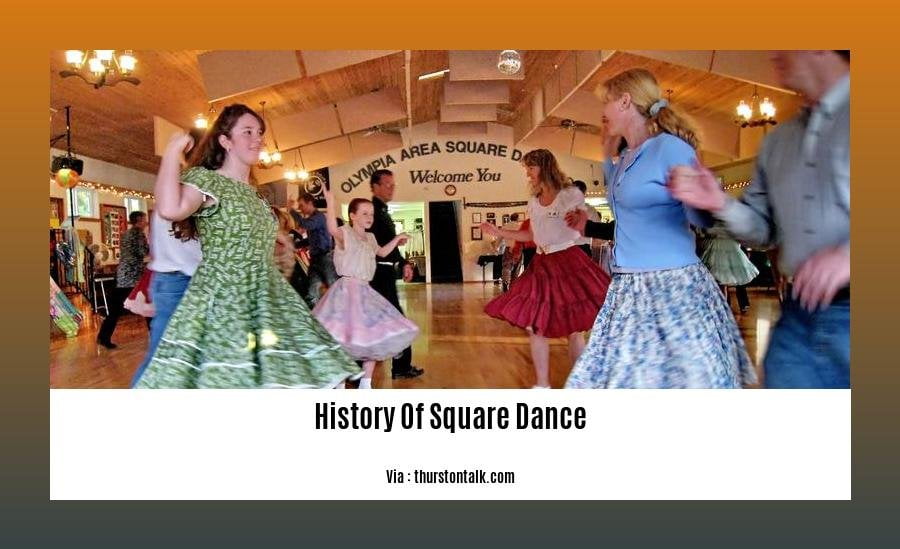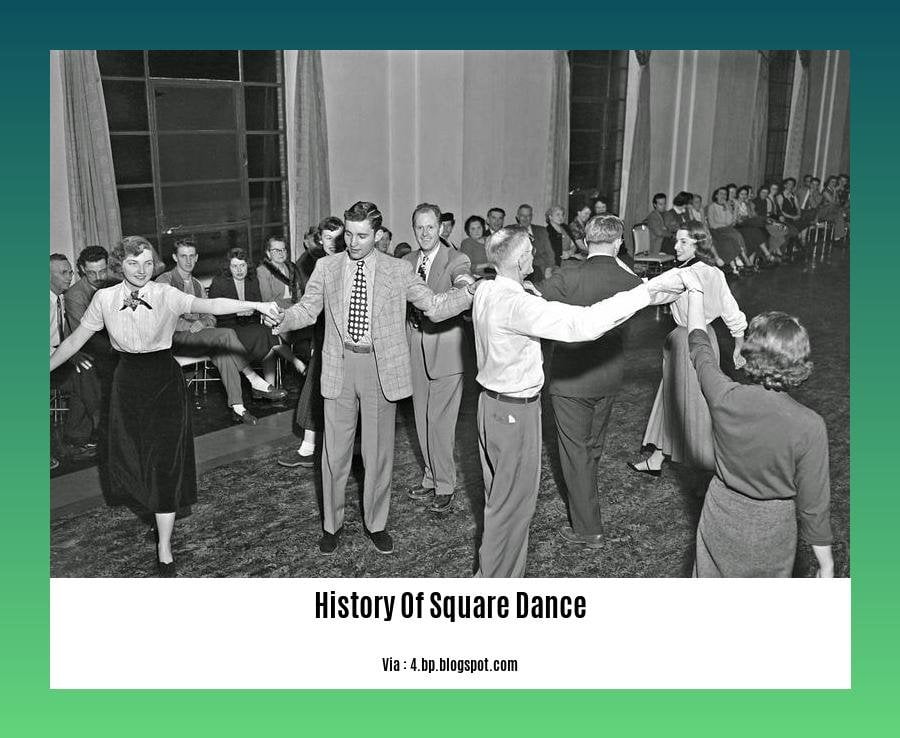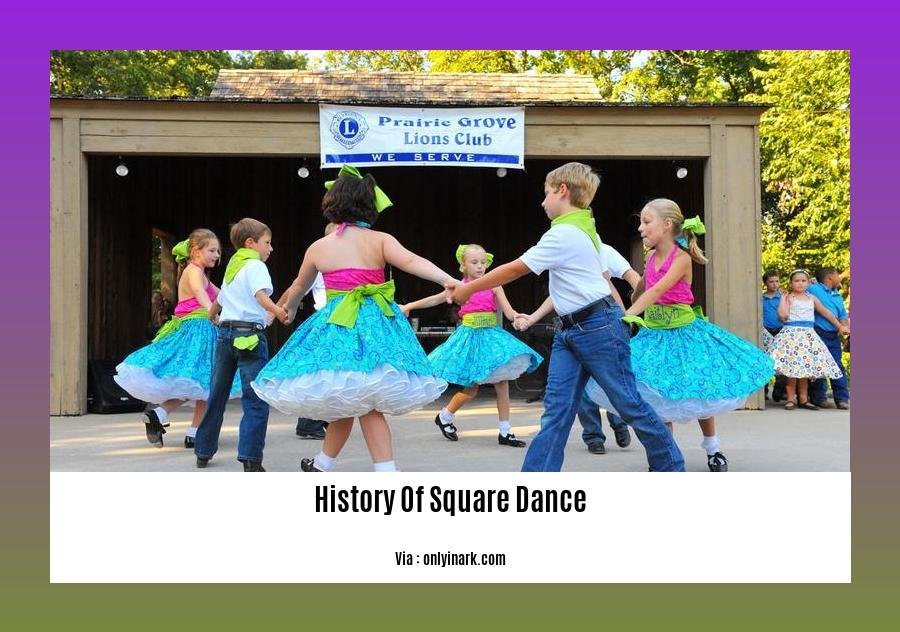[A Journey Through the Rhythm of Time: The History of Square Dance]
The rhythmic steps and lively melodies of square dance have woven a rich tapestry throughout American history. Its origins, rooted in European folk traditions, intertwined with the cultural fabric of the American frontier, giving rise to a dance form that embodies the spirit of community and celebration. From the bustling dance halls of the 19th century to the modern revival of interest, square dance continues to captivate with its timeless allure. Join us as we embark on a historical journey through this beloved tradition, exploring its evolution, cultural significance, and enduring impact on American society.
Key Takeaways:
- Square dance originated in 17th-century England as country dances.
- French influences added quadrilles and cotillions in the 18th century.
- Settlers brought square dance to America, incorporating elements from various cultures.
- Morris dance and quadrille influenced the development of square dance.
- Square dance spread throughout North America, with regional variations evolving.
- It remains a cherished American tradition, showcasing the enduring power of cultural exchange.
History of Square Dance

Imagine yourself transported back to the lively ballrooms of 17th-century Europe, where the infectious rhythms of square dancing filled the air. This beloved folk dance, deeply rooted in traditions across continents, has captivated generations with its energetic steps and social charm.
Origins in Europe
The history of square dance weaves its tapestry from the vibrant threads of English country dances and the elegant quadrilles of France. In the hands of skilled dancers, these graceful movements intertwined, creating a captivating blend.
Arrival in America
As settlers embarked on their journey to the New World, they carried the seeds of square dancing in their hearts. The dance flourished in America’s rich cultural melting pot, absorbing influences from various communities.
Evolution and Popularity
Time has witnessed the evolution of square dance, as it spread across the vast expanse of North America. Each region embraced the dance, adding its unique touches and variations. From the lively reels of New England to the graceful waltzes of the South, square dancing became a cherished expression of American identity.
Today’s Legacy
Today, square dancing continues to enchant both young and old. Its legacy lives on in countless dance halls and community gatherings, where the rhythm of history echoes through the steps of enthusiastic dancers. Square dancing stands as a testament to the enduring power of tradition, connecting us to our past while enriching our present.
Learn about the fascinating evolution of the revered tradition of History Of Square Dance Caller and how it became an integral part of our cultural heritage. Immerse yourself in the intriguing journey of History Of Square Dancing In Schools and discover its profound impact on education. Explore the Brief History Of Square Dancing and unravel the captivating origins and development of this beloved dance form. Uncover the enigmatic roots of square dancing by delving into Where Did Square Dance Originate and trace its lineage back to its earliest beginnings. Delve into the intriguing Facts About Square Dance and uncover little-known trivia and fascinating insights that will deepen your appreciation for this vibrant art form. Embark on an enthralling journey to explore the Origin Of Square Dancing and witness the genesis of a dance that has captivated generations.
History Of Square Dance Pdf

Square dance, an American folk dance with roots in Europe, has a captivating history shaped by diverse cultural influences. Let’s delve into its origins, evolution, and significance.
Origins in Europe
17th-Century England: Square dance emerged in England as “Country Dance,” featuring four couples arranged in a square and performing simple steps to lively music.
French Influences: In the 18th century, French quadrilles and cotillions influenced square dance, introducing intricate patterns and elegant movements.
Arrival in America
1700s: British settlers brought square dance to America, where it quickly became a popular social activity at gatherings and community events.
Evolution and Cultural Blending
African American Callers: In the 1800s, African American callers emerged, adding complexity and artistry to square dance with their intricate patterns and calls.
American Adaptations: American square dance evolved, incorporating elements from African American, Native American, and French Celtic cultures, resulting in a vibrant and diverse dance form.
20th Century Legacy
Revival and Standardization: The early 20th century saw a revival of square dance, leading to the formation of clubs and organizations and the establishment of standardized rules and styles.
Different Square Dance Styles: Square dance diversified into various styles, including modern square dance, Western square dance, and Appalachian square dance, each with unique characteristics.
Key Features:
- Arranged in a square with four couples
- Caller guides dancers through movements
- Eight-beat structure
- Lively tempo
- Simple and repetitive steps
Key Takeaways:
- Square dance originates in 17th-century England’s Country Dance.
- French quadrilles and cotillions influenced its evolution in the 18th century.
- American square dance emerged from the blending of European and African American traditions.
- The 20th century brought a revival and standardization of square dance.
- Square dance remains a vibrant cultural heritage, with various styles practiced today.
Sources:
History Of Square Dance Timeline
Prepare yourself for a captivating journey through the annals of square dance, where we’ll uncover its vibrant history and cultural significance. From its humble beginnings centuries ago to its lively presence today, square dance has woven itself into the tapestry of American folk traditions.
Origins In Europe
Square dance traces its lineage back to the British Isles in the 17th century, where it emerged as “Country Dance.” Over time, it absorbed influences from French quadrilles and cotillions, adding intricate steps and lively rhythms.
Arrival In America
As settlers left Europe for the New World, they carried square dance with them. It quickly gained popularity as a social activity, bringing communities together at gatherings and special events.
Evolution And Cultural Blending
The arrival of African Americans in the 18th century marked a transformative chapter in square dance history. Their rhythmic footwork and innovative calls added complexity and artistry to the dance. Additionally, influences from Native American and French Celtic cultures further enriched its repertoire.
The 20th Century Legacy
The 20th century saw a revival and standardization of square dance. Organizations like the American Square Dance Society emerged, promoting the dance and establishing rules and guidelines. Square dance also diversified into various styles, including modern, Western, and Appalachian.
Key Features
Square dance is characterized by its unique structure and energetic nature:
- Four couples arranged in a square
- Guided by a caller who issues commands
- Eight-beat structure
- Lively tempo
- Simple and repetitive steps
Key Takeaways
- History Of Square Dance Timeline:
- Origins in 17th-century England as “Country Dance”
- Arrival in America with British settlers
- Evolution and cultural blending with African American, Native American, and French Celtic influences
- 20th-century revival and standardization
- Key Features of Square Dance:
- Unique square formation
- Guided by a caller
- Eight-beat structure
- Lively tempo
- Simple and repetitive steps
Citations:
- Square Dance – Wikipedia
- History of Square Dance: What is Square Dancing and How Did it Originate?
FAQ
Q1: Where did square dance originate?
A1: Square dance originated in 17th-century England with English country dances and was influenced by French quadrilles and cotillions in the 18th century.
Q2: How did square dance arrive in America?
A2: Square dance was brought to America in the 17th century by settlers and evolved over time to incorporate elements from various cultures.
Q3: What is the significance of Morris dance and quadrille in the development of square dance?
A3: Square dance evolved from a form of Morris dance practiced by English settlers in America. Quadrille, another French dance, also contributed to the development of square dancing.
Q4: How has square dance evolved over time?
A4: Square dance has evolved throughout North America, with different regions creating their own variations. Today, it remains a cherished American tradition with various styles, including modern square dance, Western square dance, and Appalachian square dance.
Q5: What are the key characteristics of square dance?
A5: Square dance is typically performed by eight people arranged in a square, guided by a caller, and features an eight-beat structure and simple, repetitive steps.
- Star Ring Trends: Etsy vs Amazon - March 28, 2025
- Boost Pollinator Habitats: Baby Blue Eyes Sustainable Farming Guide - March 28, 2025
- Protect Big Black Bears: Effective Conservation Strategies - March 28, 2025
















